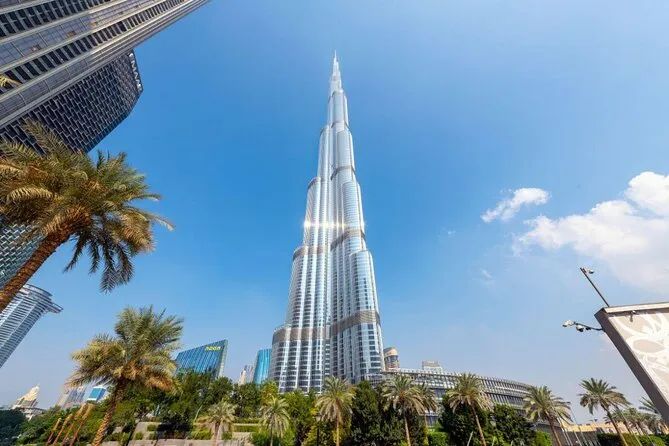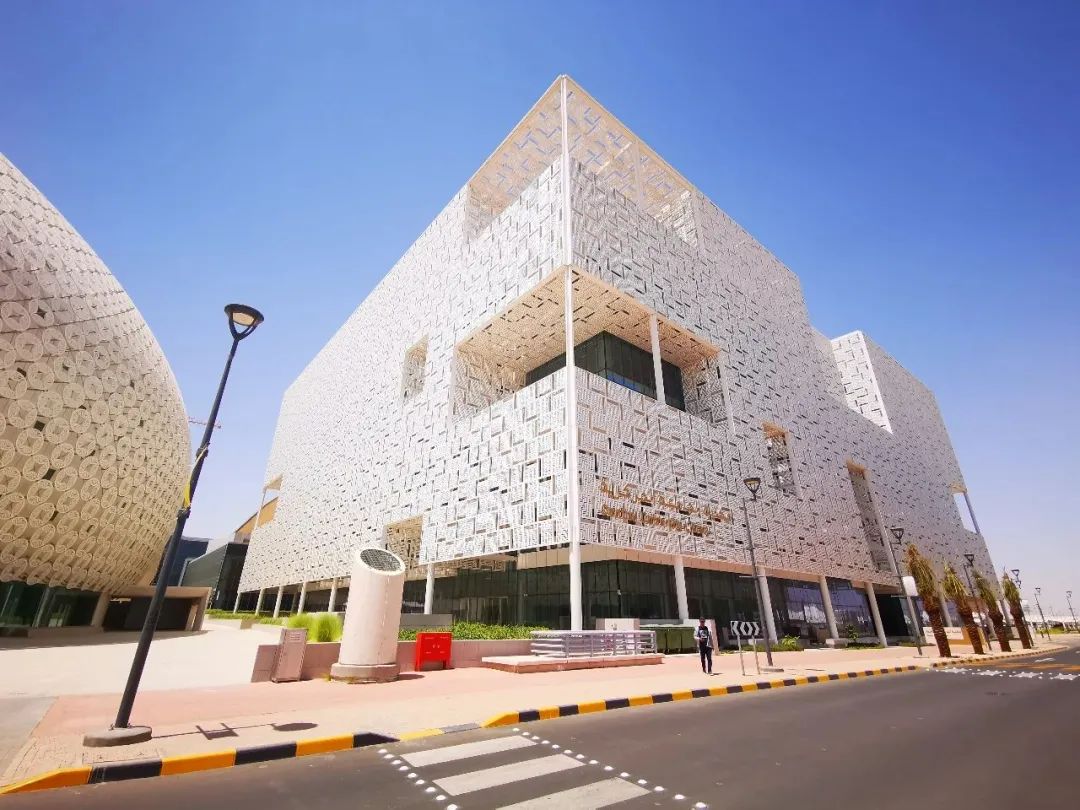The door, window, and exterior wall industry under the heatwave in the Middle East is a potential new business opportunity for entrepreneurs


In the field of modern architecture, doors, windows, and exterior walls (WDF) are not only the basic building elements, but also important bridges that connect the interior and exterior environments of buildings, showcasing architectural aesthetics and functionality.
The extreme climate in the Middle East region places extremely high demands on the performance of doors, windows, and exterior walls due to environmental factors such as high temperatures, strong sunlight, and sandstorms. Meanwhile, with the popularization of global green building concepts, the Middle East is actively exploring how to achieve green, energy-saving, and sustainable development of buildings under extreme climate conditions. This dual challenge has brought enormous innovation opportunities to the door, window, and exterior wall industries.
This article is the 20th in the Sudege "Middle East Business Economics" series, which provides an in-depth introduction to the industrial policies, laws and regulations, industry trends, market demand, competitive landscape, and potential trading opportunities in the fields of investment, trade, and engineering construction between China and Arab countries
In recent years, the Chinese door and window curtain wall industry has shown strong competitiveness and innovation ability in the global market. From the Burj Khalifa in Dubai to the University City project in Kuwait, the presence of Chinese companies is becoming increasingly common in major construction projects in the Middle East. These successful cases not only demonstrate the technical strength and construction level of China's door and window curtain wall industry, but also provide strong support for Chinese enterprises to further expand into the Middle East market.
However, facing the special needs and challenges of the Middle East market, the Chinese door and window curtain wall industry still needs to continuously explore and innovate. How to ensure the performance and stability of doors, windows, and exterior walls under extreme weather conditions? How to achieve the integration of green building concepts with local culture? How to deal with market fluctuations caused by multiple factors such as international trade and freight? These issues require high attention from the Chinese door and window curtain wall industry in its future development.
The doors, windows, and exterior wall markets in the Middle East are full of opportunities and challenges. The Chinese door and window curtain wall industry, with its development accumulation in the past few decades and successful cases in recent years, has the ability and confidence to play a greater role in this market. Through continuous technological innovation, market expansion, and innovative cooperation models, the Chinese door and window curtain wall industry is expected to achieve broader development prospects in the Middle East region.
The booming development of doors, windows, and exterior wall markets in the Middle East region
In modern architectural ecosystems, the industry holds a pivotal position. They are not only physical components of buildings, but also bridges that connect internal and external spaces, achieving a perfect fusion of functionality and aesthetics.
Windows and doors allow natural light to enter, bringing light and warmth indoors, while achieving effective air circulation both indoors and outdoors, helping to maintain a stable indoor climate. In addition, these elements also play an important role in insulation, which is crucial for improving energy efficiency and comfort for residents.
The style of windows, the design of doors, and the material and color of the exterior walls all directly affect the overall visual effect and style positioning of the building. They can become carriers of artistic creativity for architects and designers, endowing buildings with unique personality and charm.
In engineering construction, architects and designers provide creativity and planning for doors, windows, and exterior walls, while the general contractor is responsible for implementation and integration, while material suppliers and manufacturers ensure the provision of high-quality raw materials and products. The existence of regulatory agencies ensures the standardized operation and standardization of the industry.
The Middle East, especially Saudi Arabia and the United Arab Emirates, has made significant progress in the field of construction in recent years. This progress is not only reflected in the quantity and scale of buildings, but also in the quality and design of buildings. Among them, the doors, windows, and exterior wall market, as an important component of the construction field, has also experienced rapid development.
According to statistics, as of 2022, the market value of doors, windows, and exterior walls in the entire Middle East has reached 5.2 billion US dollars. Among them, Saudi Arabia and the United Arab Emirates have particularly prominent market shares. It is expected that by 2028, the market size of Saudi Arabia will reach 1.73 billion US dollars, with a compound annual growth rate of 3.4%. The market size of the United Arab Emirates is expected to reach 1.47 billion US dollars, with a compound annual growth rate of 4.2%. This growth trend indicates that the doors, windows, and exterior wall markets in these two countries will continue to maintain strong development momentum in the coming years.
Seeking a balance between extreme climate and green vision
The Middle East region, with its extreme climate conditions and growing demand for green development, has brought a series of unique challenges and opportunities to the door, window, and exterior wall industries. Here, environmental factors such as high temperatures, strong sunlight, sandstorms, and water scarcity contrast sharply with the urgent need for sustainable buildings and energy efficiency.Extreme weather conditions impose strict requirements on the performance of doors, windows, and exterior walls. High temperatures and strong sunlight may not only cause material deformation and fading, but also affect the sealing and insulation performance of doors and windows. However, sandstorms may block ventilation openings, damage surface coatings, and even affect the normal opening and closing of doors and windows. In addition, the shortage of water resources also limits the use of certain traditional manufacturing processes and cleaning methods.
However, it is these challenges that bring infinite innovation opportunities to the door, window, and exterior wall industries. In order to cope with high temperatures and strong sunlight, high-efficiency insulation products such as energy-saving doors and windows and low radiation glass have emerged. These products not only effectively block the invasion of external heat, but also maintain stable indoor temperature, thereby reducing air conditioning energy consumption and achieving energy conservation and emission reduction.
For example, using glass with high thermal resistance and UV resistance, as well as window frame materials with good sealing performance, can reduce heat transfer and UV damage. Meanwhile, dust-proof design and easy to clean surfaces are also essential.Materials and coating technologies with stronger weather resistance are also constantly emerging to cope with the erosion of harsh weather conditions such as sandstorms. These new materials and technologies not only improve the durability of doors, windows, and exterior walls, but also endow them with better self-cleaning and easy maintenance characteristics.
In the context of sustainable development, the door, window, and exterior wall industries in the Middle East have also ushered in huge opportunities. By adopting energy-saving design, using renewable materials, and promoting the concept of circular economy, the industry can contribute to achieving green buildings.
For example, using efficient insulation materials and advanced shading systems to reduce building energy consumption; Using recyclable or biodegradable materials to reduce environmental burden; And achieve maximum material utilization and easy disassembly and recycling through design optimization.
While pursuing greenery and energy efficiency, the design of doors, windows, and exterior walls in the Middle East also needs to take into account local culture and aesthetic preferences. This means respecting traditional architectural styles and elements while innovating. Through clever design and material selection, a perfect fusion of modernity and tradition, as well as green and culture, can be achieved.
Middle Eastern governments are promoting the development of green buildings by formulating relevant regulations and standards, while providing incentives to encourage innovation and the adoption of environmentally friendly technologies. This has stimulated close cooperation among manufacturers, architects, and policy makers to ensure the sustained development of the door, window, and exterior wall industries in the Middle East region.The door, window, and exterior wall industries in the Middle East will continue to seek a balance between addressing climate challenges and achieving a green vision. Through continuous innovation, cooperation, and policy support, the industry is making significant contributions to creating a greener, more energy-efficient, and sustainable building environment in the Middle East region.
China's door, window and curtain wall industry turns its focus to the Middle East market
Since the beginning of the 21st century, the Chinese building curtain wall industry has experienced unprecedented high-speed growth. Not only has the annual production exceeded 50 million square meters, occupying 80% of the global market share, but significant breakthroughs have also been made in technological innovation. As a major producer of curtain walls in the world, China's curtain walls are widely used in super high-rise buildings, demonstrating the country's strong strength in the field of architecture.
The achievements of China's curtain wall industry are not limited to the domestic market. Our curtain wall technology and products have gone abroad, adding luster to iconic buildings around the world. From the Burj Khalifa in Dubai, which stands at a height of 828 meters, to the glass curtain wall of the Russian Federation Building, which costs up to 800 million yuan, these world-class curtain wall projects are the crystallization of excellent technology and exquisite craftsmanship from Chinese companies.
However, in recent years, with the downturn of the domestic real estate market, the construction industry has also faced challenges such as a slowdown in payment collection speed. This change has led to an adjustment in the upstream customer and project order structure of the door, window and curtain wall industry, gradually shifting from focusing on medium and large private enterprise real estate projects to real estate development and urban construction projects led by state-owned and central enterprises. At the same time, multiple factors such as international trade, freight, and war have also exacerbated the fluctuations in the prices of related supporting materials.
In this context, the Chinese door and window curtain wall industry has begun to turn its attention to the Middle East market. The Middle East region, with its hot climate and unique architectural needs, has put forward more urgent requirements for innovative door and window curtain wall technologies and products. This provides new development opportunities for China's curtain wall industry.
The Burj Khalifa in Dubai sits firmly on the throne of the world's tallest building at a magnificent height of 828 meters. The curtain wall engineering part of this architectural miracle is undertaken by China Construction Industry Corporation, a subsidiary of China Construction Group, with a total area of up to 120000 square meters. The China Construction Technology Team has demonstrated outstanding innovation capabilities and exquisite professional skills, and has innovatively developed high-temperature resistant solutions for curtain walls in super high-rise buildings in hot environments.

The Kuwait University Town project is a key strategic investment project linking Kuwait with the "the Belt and Road" initiative, and also one of the key projects to realize its "2035 National Vision". The project covers a total area of 6 million square meters and is expected to accommodate 100000 college students upon completion. In 2017, Yuanda Aluminum successfully won the bid for the curtain wall project with its outstanding technical strength and rich experience, and began construction at the end of 2018. Finally, the main delivery was completed with high quality by the end of last year.

The curtain wall industry in China has already possessed strong technical strength, construction level, and risk management capabilities. We believe that by further focusing on the Middle East market, strengthening technological research and product innovation, the Chinese curtain wall industry will continue to maintain its global leading position and explore broader market space in the Middle East region.
We are a 20-year-old trading company that has been focusing on customer brand customization for many years. We have joined and represented high-quality factories and products in China. Our vision is to help everyone achieve their brand dreams. If you are interested, please take a look-


